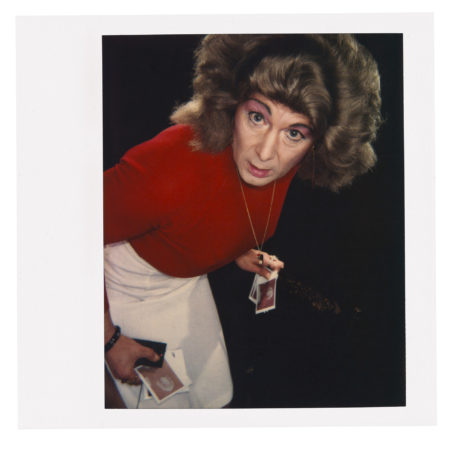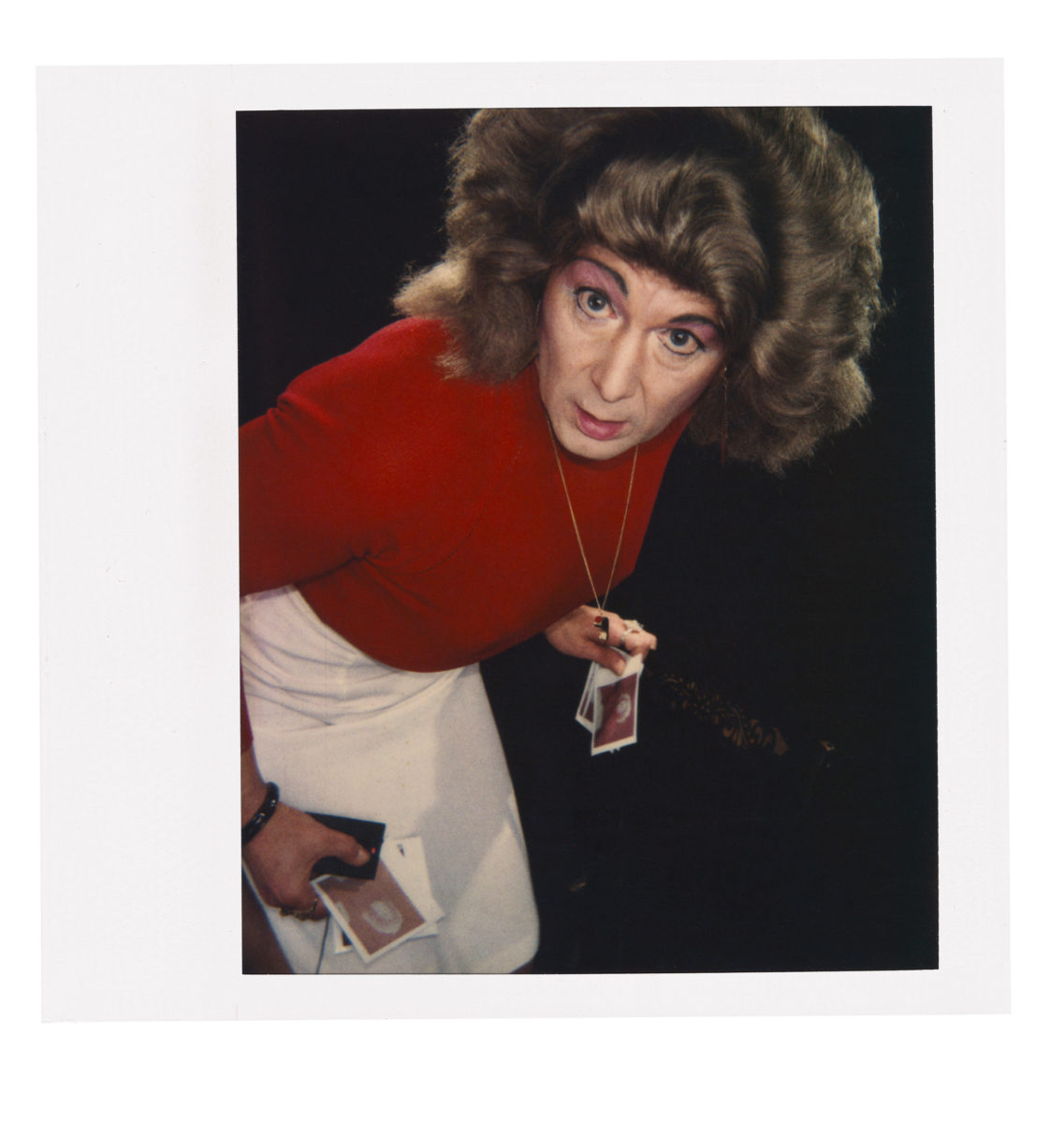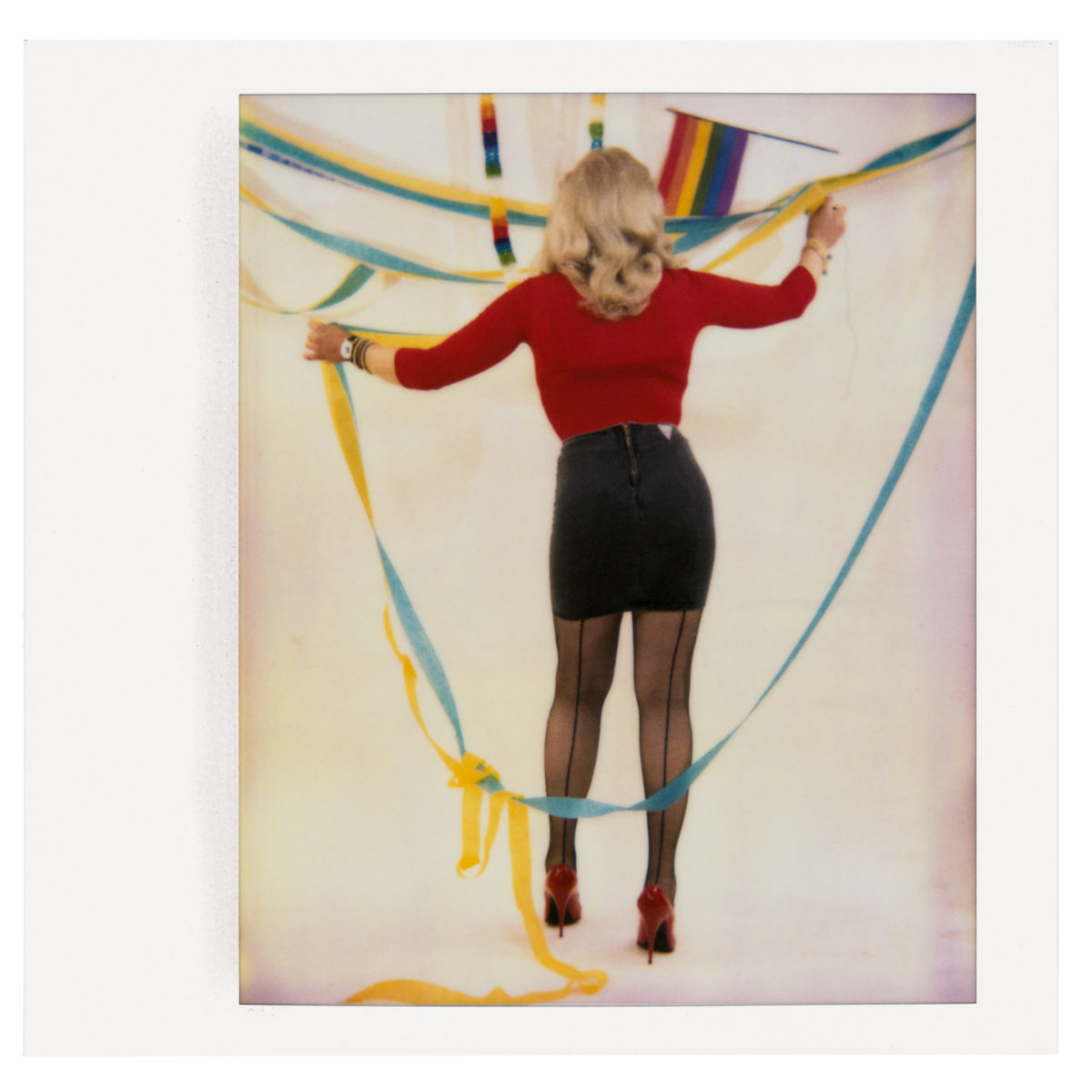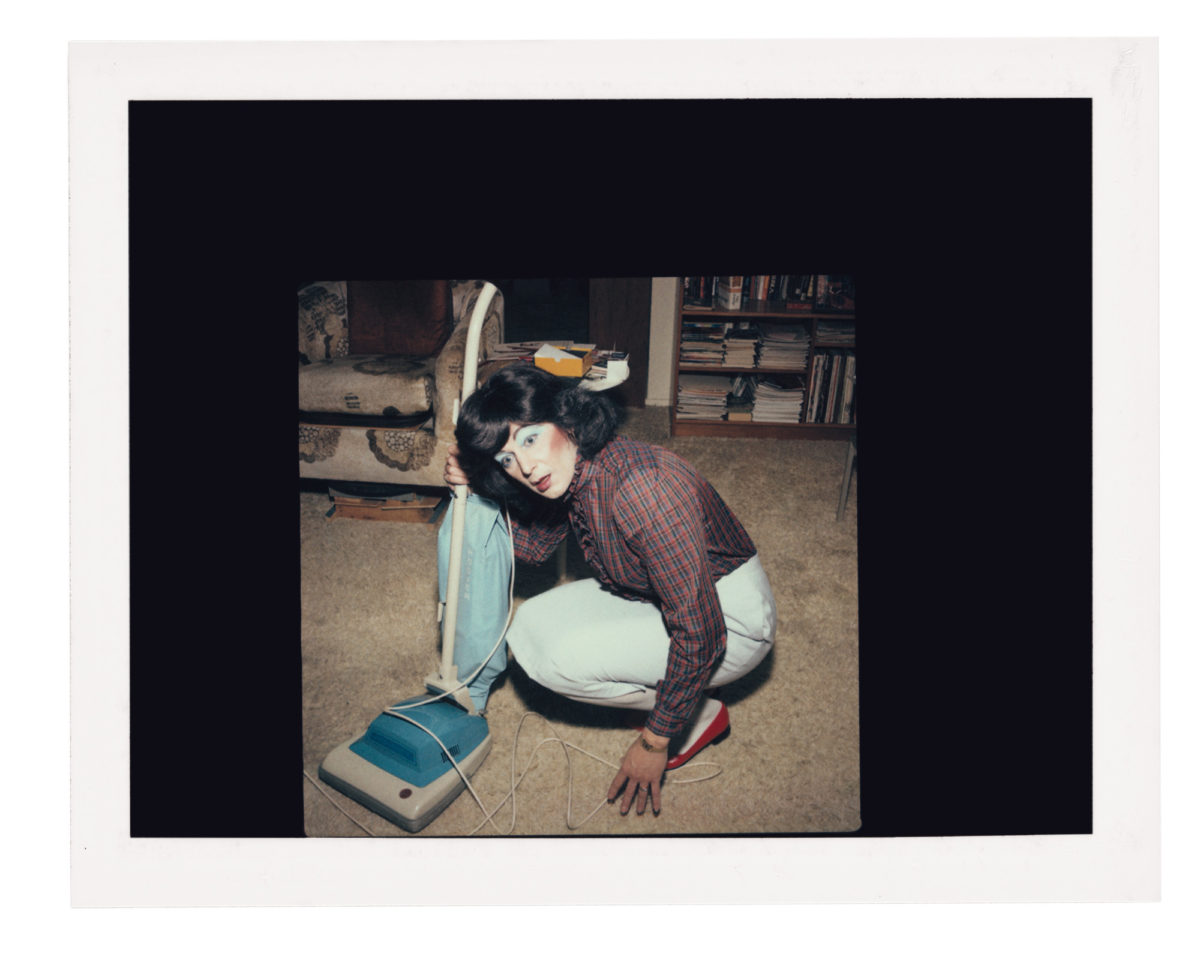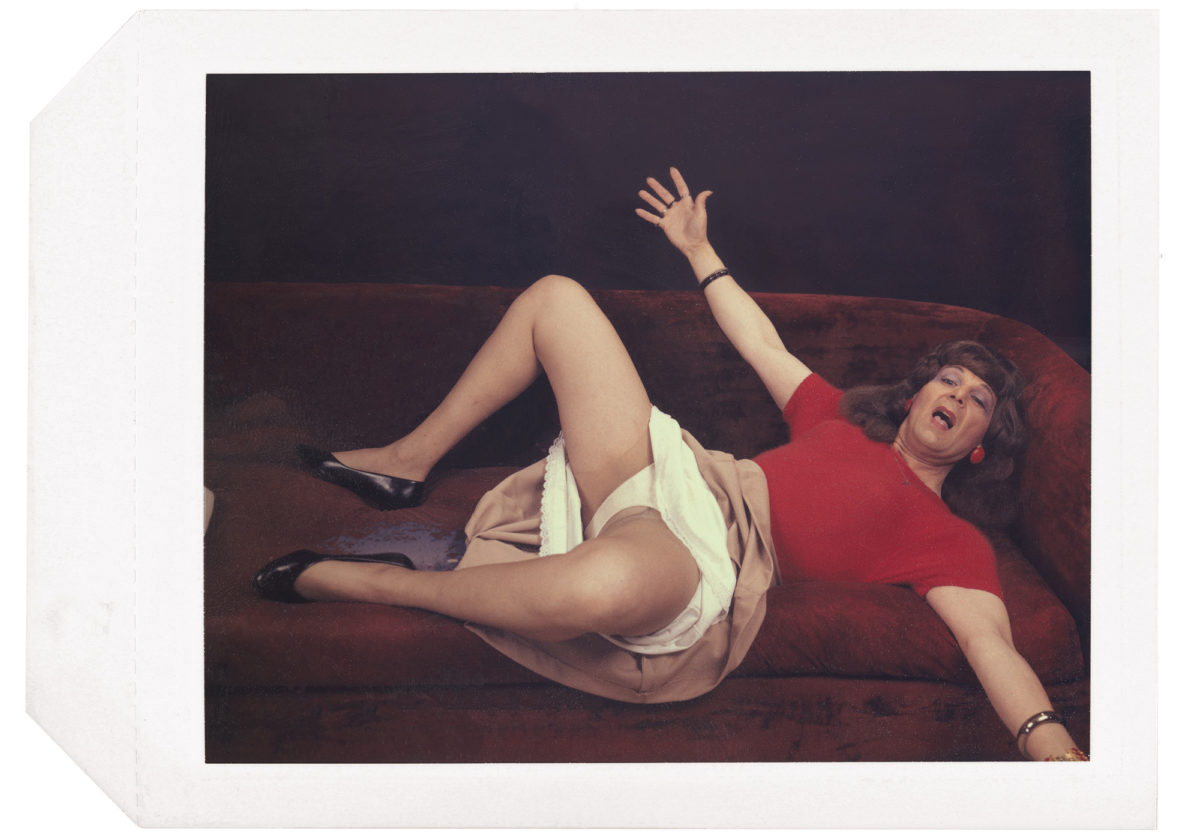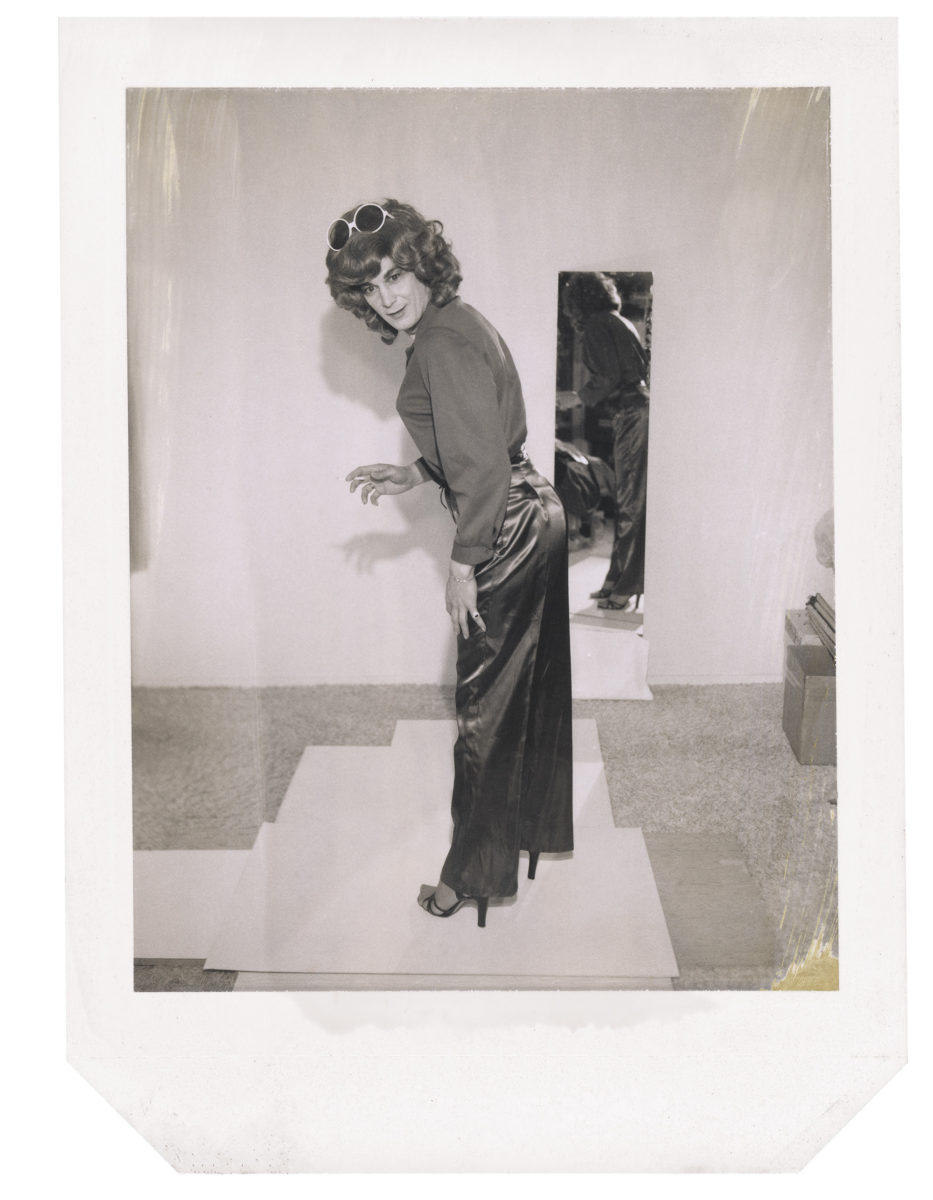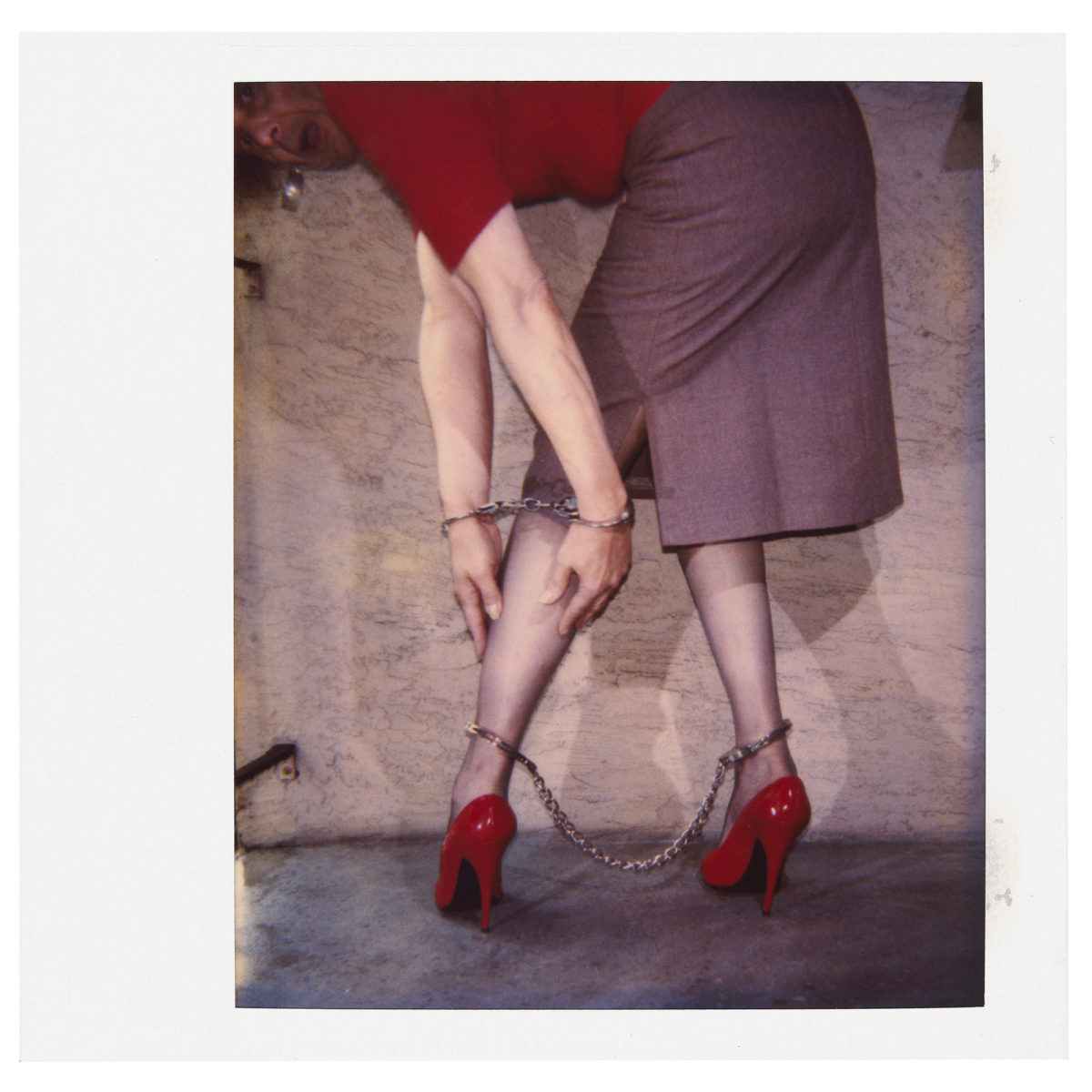
What is the first thing that you do when you get home? Do you throw your coat aside and pour yourself a drink? Perhaps you run a bath, get into your comfy clothes or heat up your dinner. The moment when the door closes firmly behind us marks the threshold between public and private, where our outward-facing self dissolves into our inner one. We each occupy multiple identities on a daily basis, switching between them at work, at play and at rest.
For April Dawn Alison, the female persona of a California-based photographer who lived in the world as a man, this transition between exterior and interior, and between public and private, was more sharply defined. In self-portraits taken over a thirty-year period, April reveals herself in the seclusion of her home, posing for the camera amidst the domestic setting of a cluttered kitchen, a carpeted living room or an ordinary hallway. Within these four walls, April Dawn Alison is born.
Who is she, this glamorous woman in the high-heeled shoes, with a glimmer of a smile turning up the edge of her eyes? Cheeky tongue stuck out in more than one shot, legs spread unapologetically wide to reveal big white pants in others. April is the many-layered creation of Alan Schaefer, born in the Bronx in 1941, who worked during the day as a commercial photographer, loved playing tennis and was a voracious listener of jazz. None of his friends or family knew of Schaefer’s private life as April Dawn Alison until his death at the age of sixty-seven in 2008. April was a personal project, a life lived out-of-view in the privacy of the home.
“Who is she, this glamorous woman in the high-heeled shoes, with a glimmer of a smile turning up the edge of her eyes?”
Over 8,000 Polaroid pictures were found following Schaefer’s death. Saved by a house clearance team curious about the images, they were sold to a local Oakland-based artist who later donated the collection to the San Francisco Museum of Modern Art (SFMOMA). The remarkable collection documents the obsessive practice and performance of a non-public self. We can never know if the archive was intended to be discovered, and its posthumous emergence means that there are so many unanswered questions. Who was April, really, and what kind of tea did she like to drink? How well did the man truly know the woman?
The camera was her stage, the click of the shutter her cue. She is serious about her drag, with bouffant wigs, pussy bow blouses and a full face of makeup. She is funny, too, posing playfully with the hoover out or a set of pastel-coloured balloons. As Erin O’Toole, curator at SFMOMA reflects, “Marked by a manic exuberance and a kaleidoscopic array of outfits and scenarios, April Dawn Alison’s self-portraits reveal a rich inner life filled with as much humour as pathos, as much joy as loneliness. In them she embodies a wide range of feminine archetypes drawn from advertising, motion pictures, and pornography.”
“For a project so intensely private to be made public feels both shocking and revelatory when brought into the light”
It is difficult to imagine what April might feel about the prospect of these images being shown in a public forum, and specifically in the context of the arts. An exhibition at SFMOMA (set to open this July) and a new book published by MACK (featuring essays by O’Toole, cultural critic Hilton Als and Zachary Drucker, star of the television show Transparent), bring many of the portraits together publicly for the first time. For a project so intensely private to be made public feels both shocking and revelatory when brought into the light. Moreover, in an age of oversharing and instant gratification, a thirty-year project intended only for private consumption and personal pleasure feels so anachronistic and so genuine as to become almost sacred.
Today, the right for trans people to exist in the world without fear of discrimination or violence remains under threat, even as renewed visibility has allowed for wider conversation on these issues in the mainstream media and beyond. April Dawn Alison did not exist outside of her Oakland apartment, and was invisible to all but herself and her camera. Hers was a deeply internalized way of being, and one can’t help but wonder how she might have experienced the world had she felt compelled and safe to step beyond the threshold of her own home. Instead, photography became her act of both defiance and self-preservation, revealing as much vulnerability as pride. Together, her self-portraits carve out room for the gender fluidity that society and its rigid binaries so rarely make space for.
